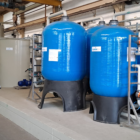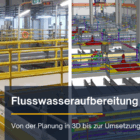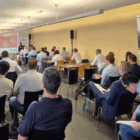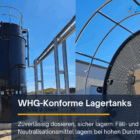Water recycling is a key concept in modern industrial water treatment that aims to use water resources efficiently, reduce wastewater volumes and lower operating costs. In view of increasing water scarcity and strict environmental regulations, water recycling plays a crucial role in sustainable industrial production. In this article, we examine the technical principles, processes and fields of application of water recycling as well as the associated challenges and solutions.
Table of contents
Technical basics of water recycling
Water recycling involves the recovery and reuse of process and waste water in industrial applications. The aim is to improve water quality so that the recycled water can be reintroduced into the production process.
Important parameters in water recycling
COD (chemical oxygen demand): Indicates the amount of organic contaminants that need to be broken down. A high COD value can indicate substances that are difficult to biodegrade and therefore require specific treatment processes.
Salt content (TDS): Too high a concentration of dissolved salts can impair processes and cause scaling, which in turn reduces the efficiency of membrane processes and other treatment steps.
Particles and solids: Solids can clog membranes and system components, which is why effective filtration and sedimentation processes are required.
Microorganisms: Biofouling caused by bacteria and algae can significantly impair the performance of water recycling systems. Antimicrobial measures and regular maintenance are therefore essential.
Water recycling process
1. mechanical pre-treatment
Mechanical processes are used to remove coarse impurities and solids. These processes are the first step in the recycling process and prepare the water for subsequent treatment stages:
Screens and strainers: Remove coarse particles such as suspended solids, wood residue or plastic from the water flow. This protects downstream system components from damage.
Sedimentation: Solids settle in clarifiers due to gravity. This method is particularly effective in the treatment of heavily contaminated water.
Flotation: With the help of air bubbles, lighter substances such as oils and fats are brought to the surface where they can be easily skimmed off.
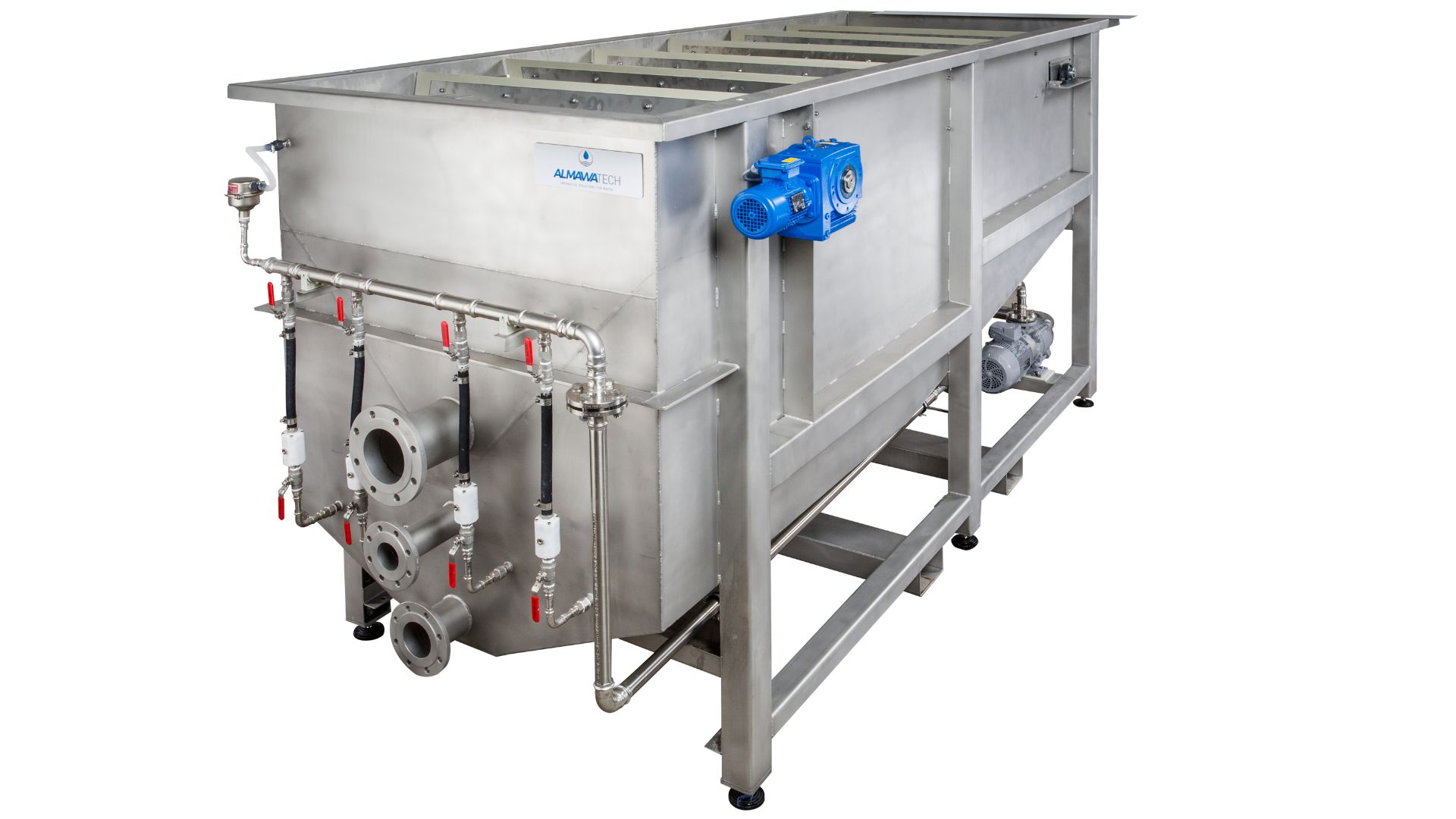
Photo: Our flotation plant with precipitation and flocculation
2. chemical and physical processes
These processes are crucial for removing dissolved substances and colloidal impurities:
Precipitation and flocculation: By adding precipitants such as aluminum sulfate or ferric chloride, dissolved substances are converted into insoluble particles, which are then removed by sedimentation or filtration.
Neutralization: pH adjustment is essential to create optimum conditions for chemical and biological processes. This is particularly important when treating acidic or alkaline wastewater.
Activated carbon filtration: Activated carbon removes organic compounds that are responsible for color, odor or taste. It also efficiently adsorbs residual chemicals from pre-treatment.

Photo: Our CP system with neutralization and activated carbon filtration for the pre-treatment of wastewater containing heavy metals prior to reverse osmosis
3. biological treatment
Biological processes are particularly suitable for reducing organic loads such as COD and TOC. They are a cost-effective way of maximizing the degradation performance of organic compounds:
Activated sludge process: Microorganisms break down organic substances in aerobic reactors. This process is particularly effective for medium to high COD values.
Anaerobic treatment: Without oxygen, microorganisms decompose organic substances and produce biogas, which can be used as an energy source. This method is particularly suitable for wastewater with a high organic load.
Biofiltration (e.g. ALMA BioFIL): Compact, biologically activated filtration systems offer an efficient option for the pre-treatment of wastewater with a low residual organic load.
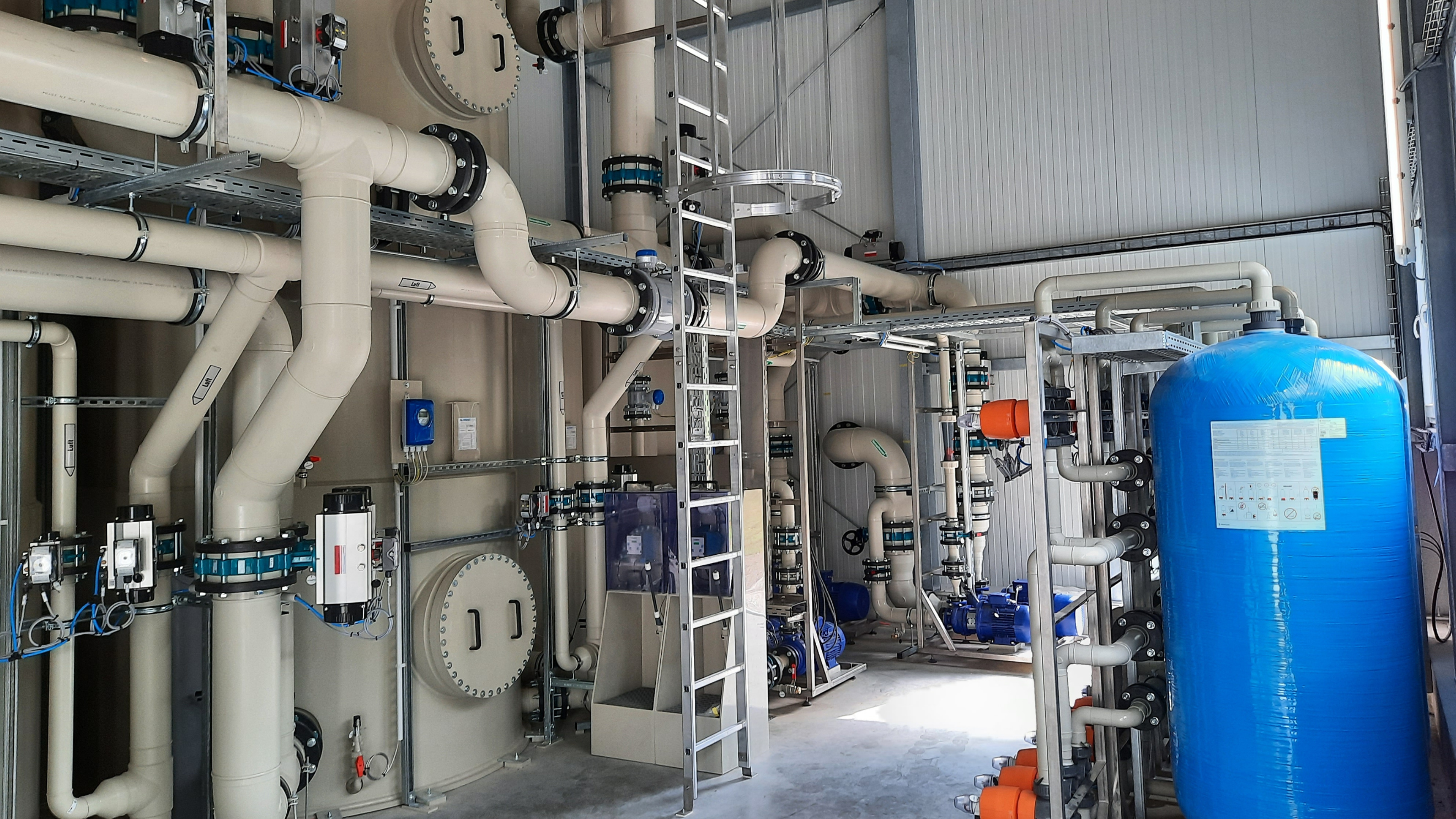
Photo: Our biofiltration for the pre-treatment of organically contaminated wastewater upstream of a reverse osmosis system
4. membrane-based technologies
Membrane processes are key technologies in water recycling, as they offer high separation efficiency and remove even the smallest impurities:
Ultrafiltration (UF): Removes particles, colloids and microorganisms. This process is often used as a pre-treatment for reverse osmosis.
Reverse osmosis (RO): Removes up to 99 % of dissolved salts, organic substances and heavy metals. It is often used in the circulation of process water.
Nanofiltration (NF): Provides selective removal of specific ions and organic molecules. NF is often used to reduce water hardness.
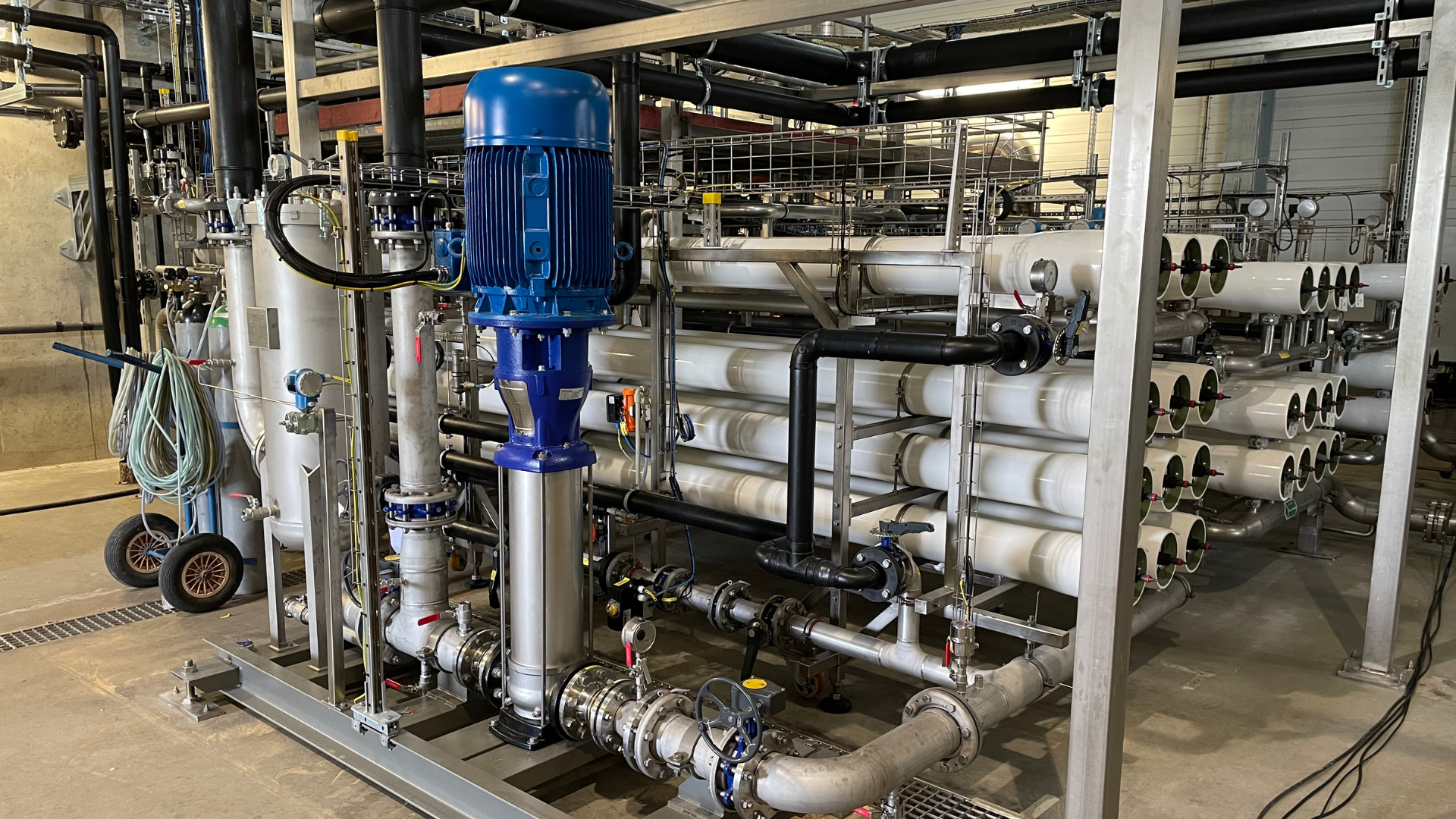
Photo: Our reverse osmosis system for in-house water recycling
5. combination of procedures
In practice, a combination of these processes is often used to achieve the desired water quality. For example, a combination of biological treatment, ultrafiltration and reverse osmosis can ensure almost complete removal of impurities.
Applications of water recycling
1. metalworking industry
The metalworking industry produces large quantities of process water that can be efficiently reused through water recycling:
Cooling circuits: Cooling water is returned to the circuit after solids and salts have been removed. This significantly reduces fresh water consumption.
Surface treatment: Waste water from electroplating or painting contains heavy metals and chemicals that can be removed by precipitation and reverse osmosis.
2. food and beverage industry
Cleaning processes: Rinsing water from cleaning processes can be reused after activated carbonand membrane filtration, which significantly reduces water consumption.
Production water: Recycled water can be used in non-critical applications such as steam generation or system cooling.
3. chemical industry
Raw material recovery: In addition to water, valuable chemicals can also be recovered from waste water, which lowers operating costs and reduces the environmental impact.
Circulation: The reuse of treated water minimizes the need for fresh water and reduces the amount of waste water.
4. energy generation
Boiler feed water: Recycled water is treated to prevent corrosion and deposits in steam boilers. This increases efficiency and extends the service life of the systems.
Cooling tower water: By treating desalination water, cooling circuits can be operated virtually closed, which enables considerable savings to be made.
Challenges and solutions
1. high operating costs
The implementation of water recycling systems requires a high initial investment. In the long term, however, these costs are amortized through savings in fresh water and wastewater disposal.
2. scaling and fouling
Deposits on membranes and in pipes can impair the efficiency of the system. Comprehensive pre-treatment and the use of antiscalants minimize these problems.
3. quality control
Consistently high water quality requires precise monitoring of all process parameters. Automated control systems and regular maintenance are essential.
4 Regulatory requirements
Compliance with environmental regulations often requires the use of additional technologies or proof of water quality through regular analyses.
Future prospects for water recycling
1. circular economy in the industry
Water recycling is a crucial part of the circular economy. By reusing water and minimizing waste, industrial companies can achieve their sustainability goals while reducing their dependence on external water sources.
2. integration of renewable energies
The energy intensity of water recycling systems can be reduced by integrating renewable energies such as solar or wind power. This offers considerable potential for reducing the carbon footprint, particularly in energy-intensive processes such as reverse osmosis.
3. research and development
Current research projects are focusing on the development of robust membranes with a longer service life and improved fouling resistance. At the same time, new processes for reducing the consumption of chemicals in pre-treatment are being investigated.
Conclusion
Water recycling is not only an answer to global water scarcity, but also a key to improving the efficiency and sustainability of industrial processes. By using modern technologies and integrating intelligent control systems, companies can make optimum use of water resources, minimize wastewater flows and improve their environmental footprint.
For further information on our products, please feel free to contact us at any time!


